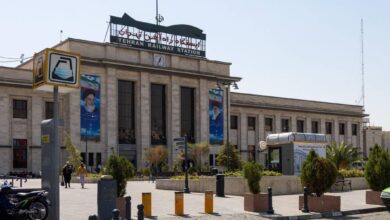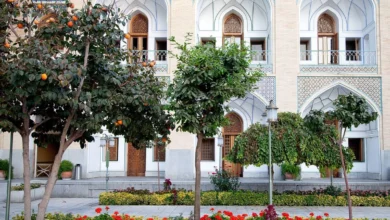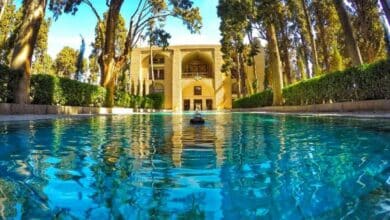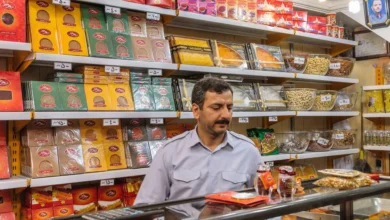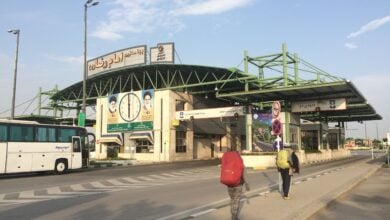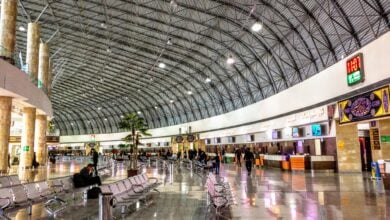
Kashan is a humble city located three hours away from the Capital of Iran, on the important route towards Isfahan. Nestled on the edge of the Central Desert of Iran, it might initially appear to be a quiet town, but with 7000 years of history, Kashan holds numerous treasures waiting to be uncovered.
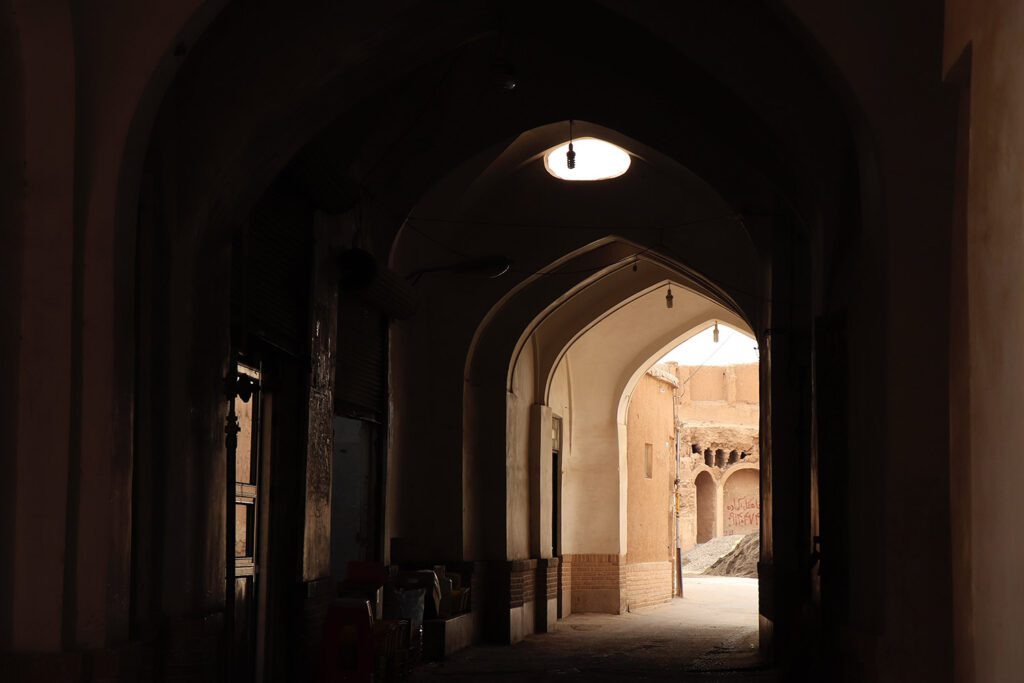
Kashan is the second largest city in Isfahan province. An important stopping point on the Silk Road, Kashan has a charming traditional bazaar to bridge between the present and the past. Additionally, visitors can find souvenirs like the renowned Kashan Rug, one of the finest Persian carpets named after the city. This historic city is the birthplace of the rare Zarinfaam tile famous for its magical golden hue. Furthermore, its World Heritage site, the Fin Garden, stands like an oasis in the hot and arid region, bearing considerable cultural and historical significance.
Orienttrips Experience
Contents
Book Daily Kashan Tour
Every year during the month of May, numerous Iranians travel to Kashan and its summer resorts, to enjoy the damask rose harvest and to purchase fresh rose water. Due to its close proximity to the Rig-e Band desert, it is also a popular hub for desert adventure. Above all, travelers have the opportunity to stay in some of the most exquisite boutique hotels of the entire country, as Kashan is renowned for its magnificent historical houses.
Must Visit Attractions
The Fin Garden
The Fin Garden is one of nine gardens in Iran that were granted a UNESCO World Heritage status in 2011. A meticulously planned garden with geometric patterns, intricate system of water channels and aged trees, Fin Garden is a delightful blend of natural beauty and architectural elegance. The site of assassination of Amir Kabir, one of the most influential ministers of the Qajar kings, holds a special place in Iranian history.
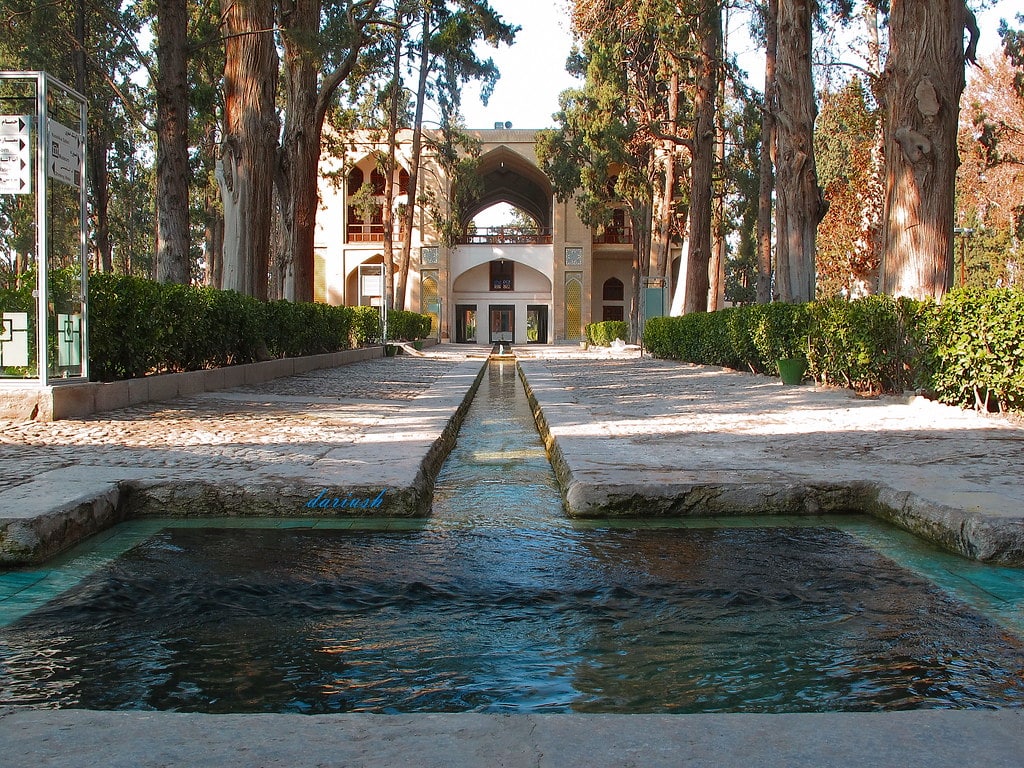
Sialk Mound
Tappeh Sialk is the archaeological site where artifacts of the Sialk civilization were discovered. It is believed to be the earliest settlement in Central Iran and holds early evidence of agriculture, pastoralism, iron smithing, pottery making and weaving. While the archaeological site is not attractive to the general public, its small museum showcases a collection of astonishing artifacts and objects found in the site. A large portion of the artifacts are displayed in prominent museums such as British Museum and the Louvre.
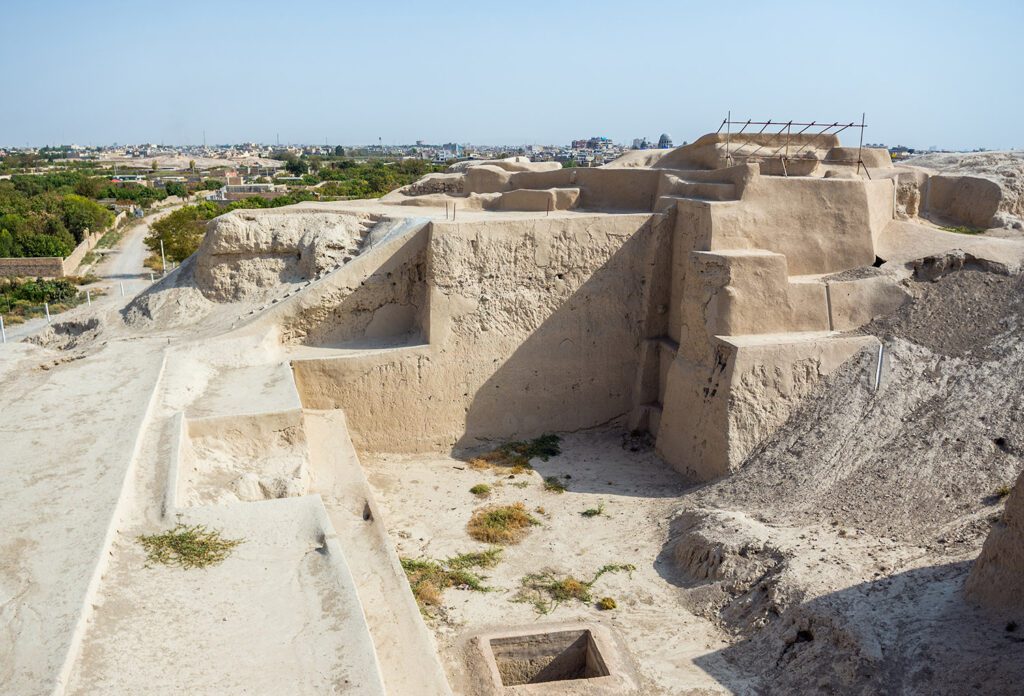
Agha Bozorg Mosque and Madreseh
This Qajar-era complex comprises a precisely symmetrical mosque with a spacious two-level courtyard. The lower level houses the theological school or Madreseh. The large dome is supported by eight pillars, and, along with the sunken courtyard and its central fountain, it facilitates air circulation to combat the hot summer day.
Tabatabaei and Borujerdi House
Two of the most famous traditional houses of Kashan, hold a legendary love story that is retold among the local people. First, the Tabatabaei house was constructed to house the wealthy Tabatabaei family. Then Borujerdi, another affluent merchant of Kashan, came to ask to marry Tabatabaei’s daughter. The proud father asked him to build a similar house to honor the bride. Borujerdi hired the same renowned architect and generously paid him to ensure that his house surpasses Tabatabaei’s. These two houses are now landmarks of elegant Persian Architecture in the Qajar era.
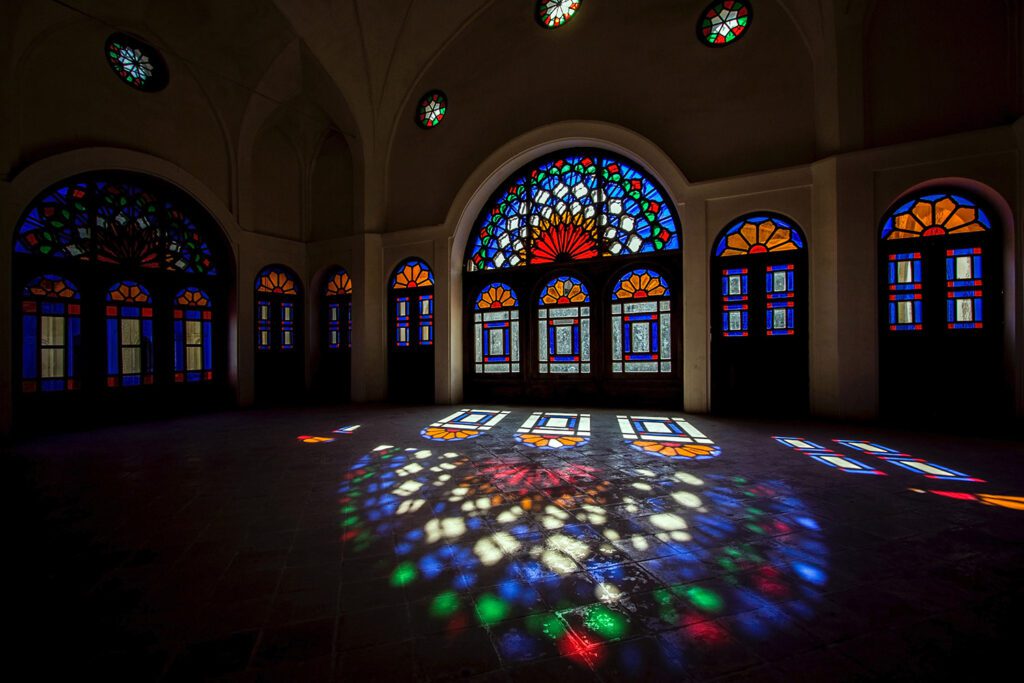
As you step inside, you are greeted by beams of light streaming through colorful windows. Marvel at the detailed stucco decorations and relish the cool air in the lower levels, thanks to the ingenious wind towers, known as Badgirs.
Sultan Amir Ahmad Bathhouse
This historical bathhouse or Hammam is believed to date back to the Seljuq Dynasty era in the 16th century, and it was renovated after an earthquake. Different sections such as Sarbineh, Garmkhaneh and Khazineh, show the traditional architecture of a public bathhouse, decorated with turquoise tiles and appealing symmetrical drawings. The glass discs in the ceiling are examples of roof lights in traditional architecture.
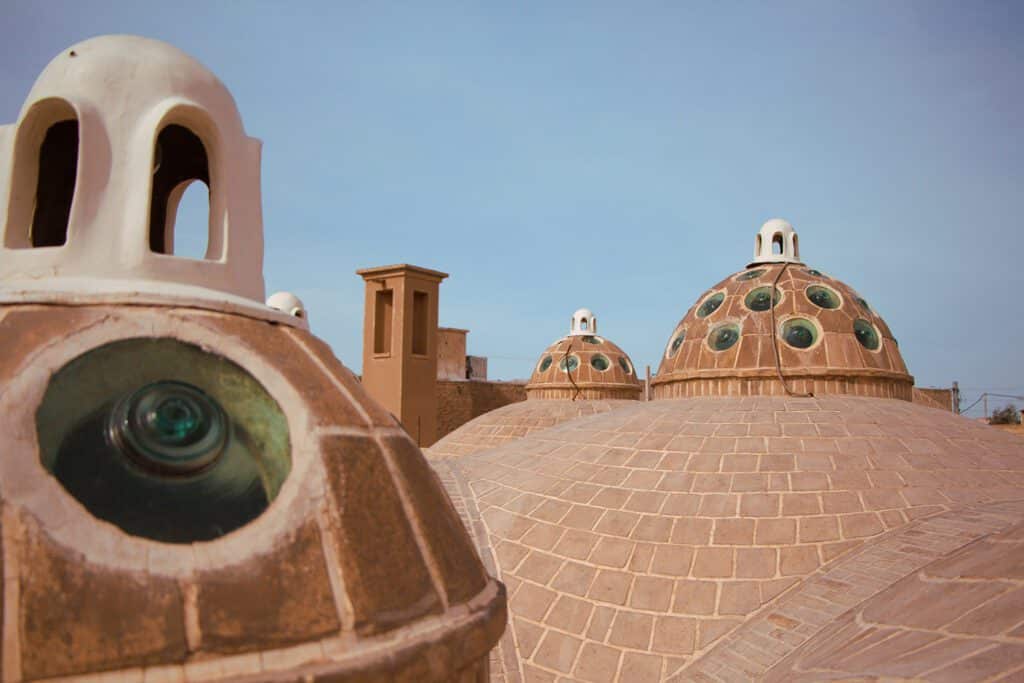
Puppet and Toys Museum
If you are traveling with kids, a visit to the Puppet Museum is a great opportunity for entertaining them. The museum, as its name suggests, exhibits a wide range of traditional toys and puppets and the friendly staff will tell their stories.On-site there is even a toy workshop and if you are lucky, you might catch a puppet show on the day of your visit. Additionally, the guesthouse at the museum provides a delightful and reasonably priced accommodation option.
Cultural Experiences
Golab Giri
Undoubtedly, the most renowned event in Kashan and its surrounding counties is the process of distilling rose water, known as Golab Giri in Persian. This tradition takes place in late April and early May and attracts thousands of tourists to enjoy the sight and fragrance of fresh flowers and to purchase Golab. Rose water is the king when it comes to making Persian desserts, almost as important as saffron. Beyond culinary use, rose water has immense cultural significance. Many Iranians wear rose water as a fragrance in mourning ceremonies or use it to wash the tombstone of their beloved deceased, or martyrs of the war.
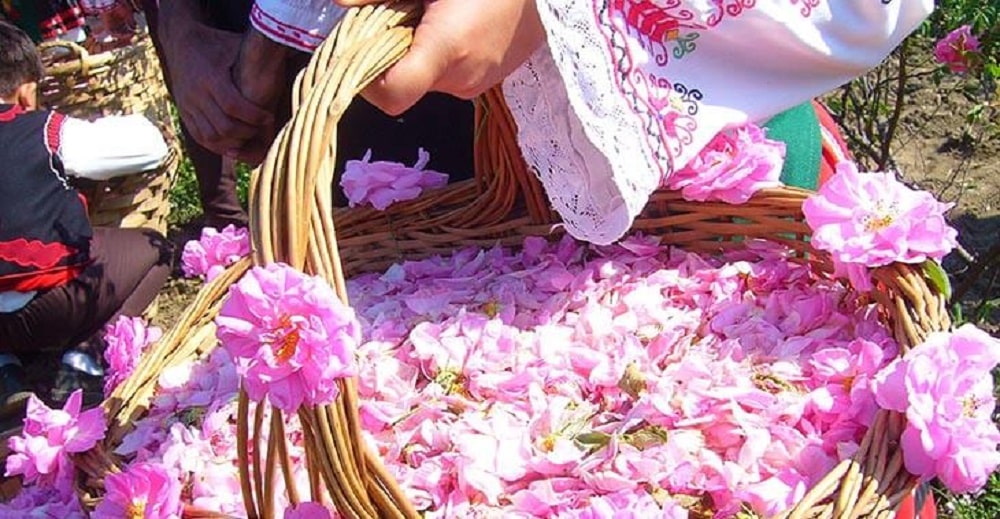
Muharram
Muharram mournings are observed with utmost gravity in Kashan and can stretch for 50 days. During the lunar months of Muharram and Safar in the Islamic calendar, every city has its own way of paying respect to the mourning rituals and Kashan holds a particularly special place in this regard. During these 50 days black flags are adorn in every street, almost everyone wears black attire and participates in ceremonies at venues called Hosseinieh and Tekyeh.
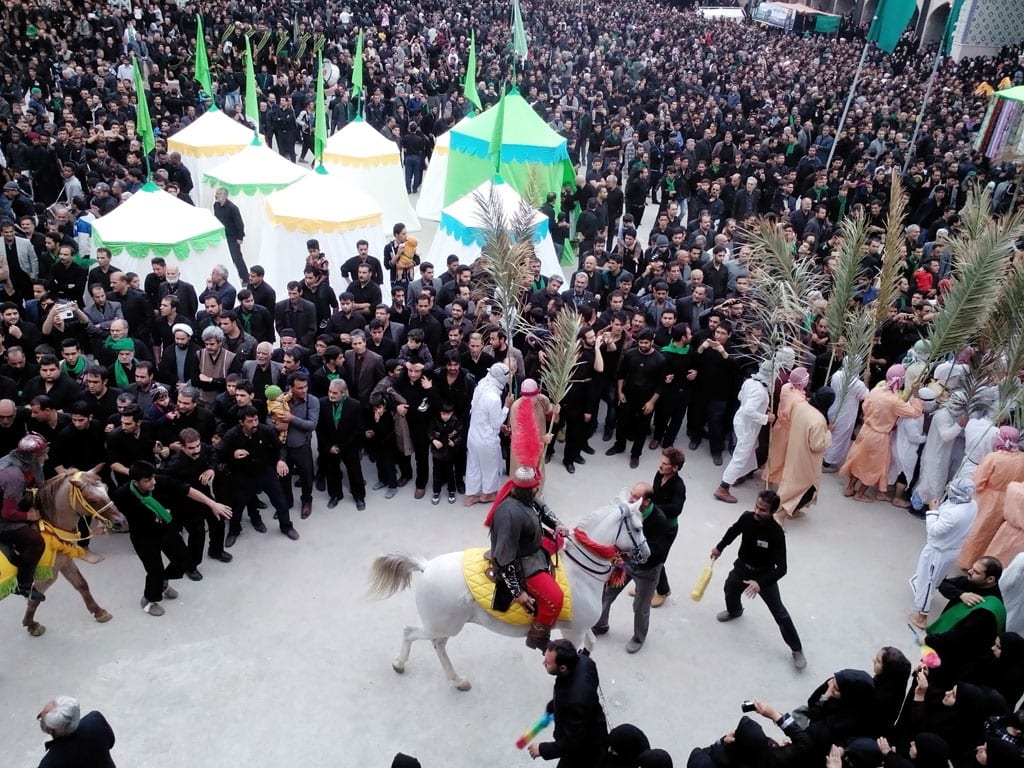
People give offerings such as food, tea or other beverages to the public or even through a mourning ceremony at their home for the neighbors. Technically during this time music is banned in the city and religious rules are more strictly observed. If you are interested to see the religious ceremonies, you can plan to be in Kashan for Tasu’a and Ashura days (9 and 10 of Muharram) to see the spectacle of Nakhl Bardari.
Qalishuyan
The ceremony of Qalishyan takes place in a small town called Mashhad Ardehal. This is the only religious ceremony that is based on the solar calendar and always happens on a Friday in early October.
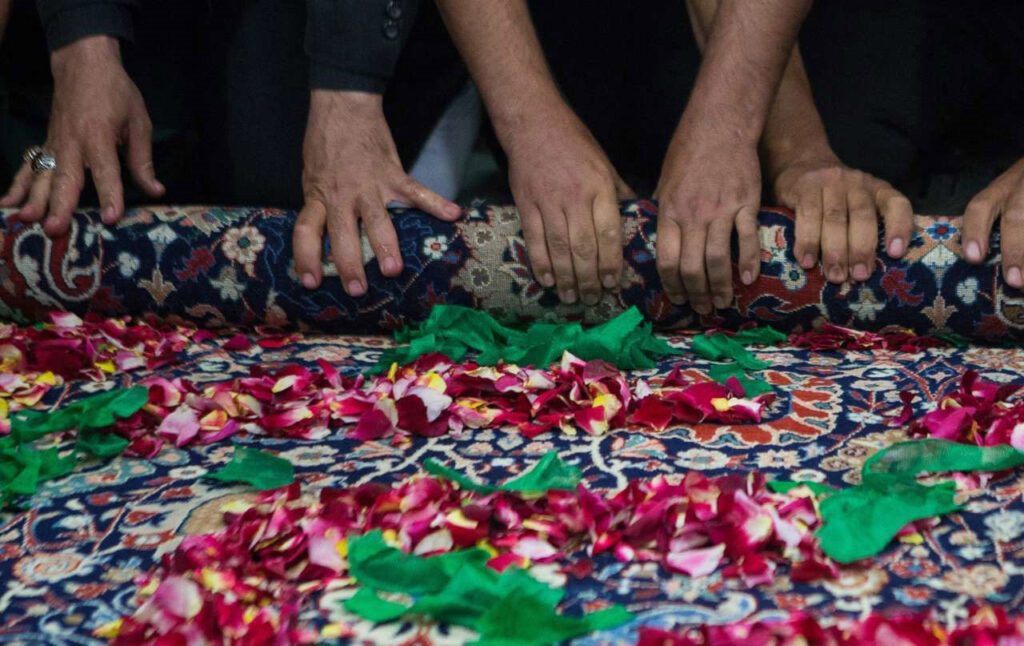
In this crowded ceremony, a sacred carpet, which resembles the body of an early martyr of Islam, is tied, carried and then sprinkled with water in a specific ritual and then returned to its original place. Qalishuyan has been inscribed on the UNESCO’s Intangible Cultural Heritage List.
Ab Pashan
Tirgan is one of the ancient festivals in Iran that is still celebrated in some parts of the country. An old myth tells the story of the rainfall fairy (Tishtrya) winning over the demon of drought (Apaosha) and this day is celebrated on July 4th each year. Some villages of Kashan honor Tirgan by splashing water on each other to beat the heat and bring health and good luck.
Humbabaei
It is possible that many Iranians do not know of the Humbaba ceremony in Kashan. On the 15th night of the fasting month of Ramadan, elderly men in Kashan gather and march in the city, singing some traditional and religious verses, going door to door to receive gifts from families. Gifts can be money or goods, and are gathered at the mosque to be distributed between people in need.
Gol Ghaltan
This delightful family celebration takes place in Kashan and also in the city of Damghan. During the Golabgiri season, families celebrate a baby’s first Spring by gathering lots of damask roses. After bathing, the baby is placed on a large white sheet of cloth and covered with rose petals. Families hold the corners of the sheet and while the baby is enjoying the swing, they sing verses to him. They believe that such a ceremony brings health and beauty for the baby!
Cuisine
Main cuisine of the central region of Iran usually consists of stew-like dishes that are served with bread and sometimes rice, yet these dishes differ from region to region. Kashan has its own traditional dishes that may look similar, but taste different from the other regions. Finding restaurants that serve traditional Kashan dishes could be difficult, so we suggest that you check the restaurant section of this guide.
Shefteh Somaq (Kufteh Ab Somaq)
Almost similar to the popular dish of Kufteh, Shefteh Somaq has a sweet and sour taste due to the use of sumac in the recipe. Main ingredients are ground beef, chickpea flour, onion and sumac and it is usually served with bread.
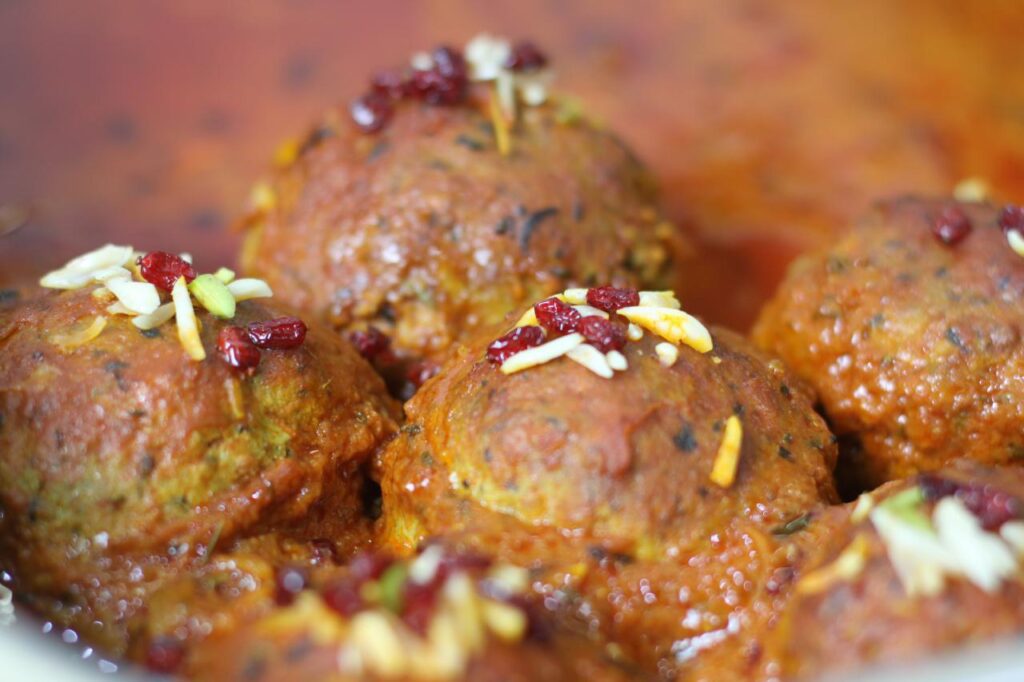
There are also Shefteh Anar (with pomegranate molasses) and Shefteh Bademjan whose main ingredient is eggplant.
Goosht o Loobia
You may have tried Abgoosht, a very popular Persian dish among Iranians. Goosht o Loobia is somehow similar yet different from Abgoosht. Ingredients are lamb, white beans, rice and sometimes herbs like fenugreek or chives.
Abgoosht-e Beh
Another version of Abgoosht that tastes totally different. The Kashani version of Abgoosht has pomegranate molasses and quince! It will definitely taste sweet and is served with bread.
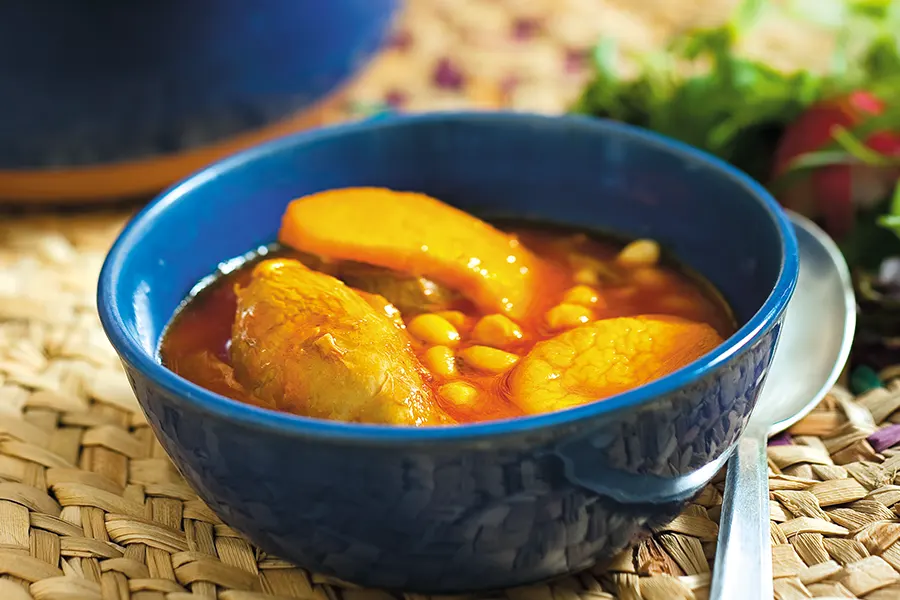
Nokhodaleh
This is a traditional stew of lamb, garbanzo beans, tomato and whole dried lime! A sibling of Gheymeh Yazdi and a more distant relative of the general Gheymeh, this popular stew is always served on rice.
Chelow Dizi
The name is misleading! Chelow in Persian cuisine is the fluffy white rice and Dizi is a single serving of Abgoosht baked in a ceramic dish. But Kashan’s Chelow Dizi is a mixture of rice, lamb and black eyed peas which smells and tastes amazing!
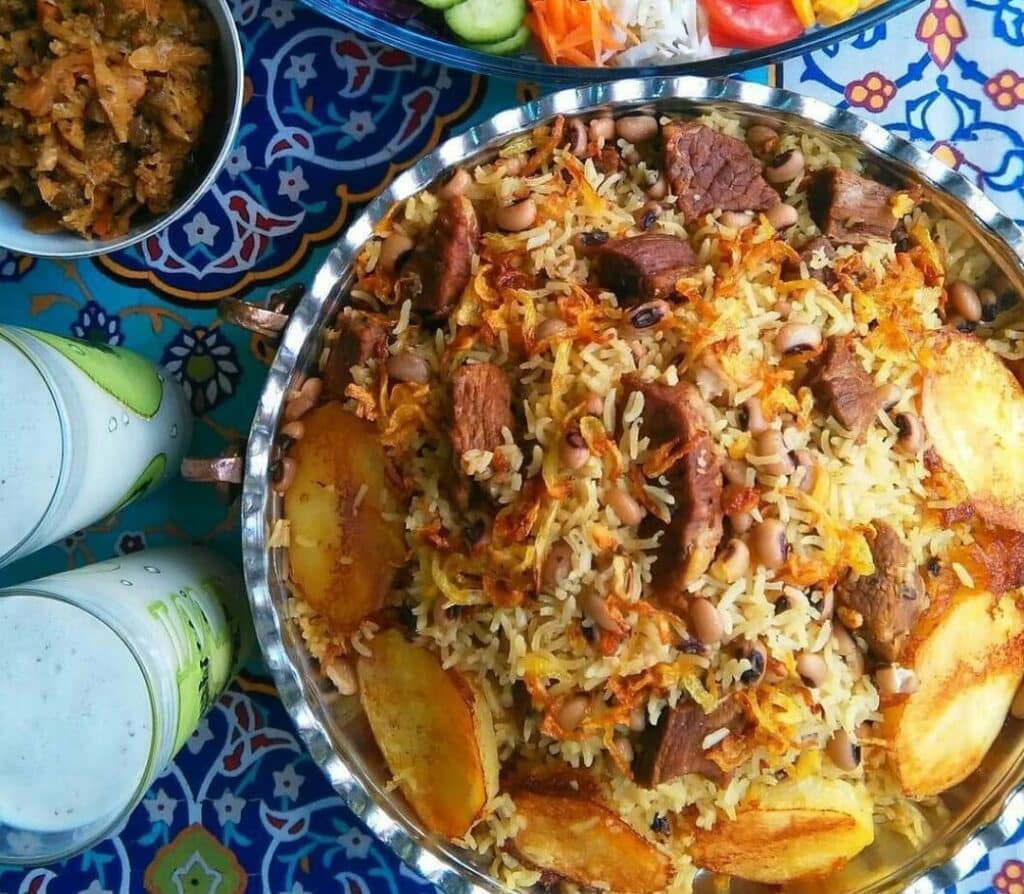
Day Trips
As a hot and arid city, Kashan has very pleasant summer getaways nearby, that have cooler weather and delightful fruit orchards and flower gardens. These cities also have cultural attractions that make the trip more rewarding.
Abyaneh
This tranquil village is ranked one of the most touristic villages of Iran that has kept its authenticity. The usage of red clay in building the houses gave Abyaneh its distinctive look and the well preserved cultural traditions make its people so special.
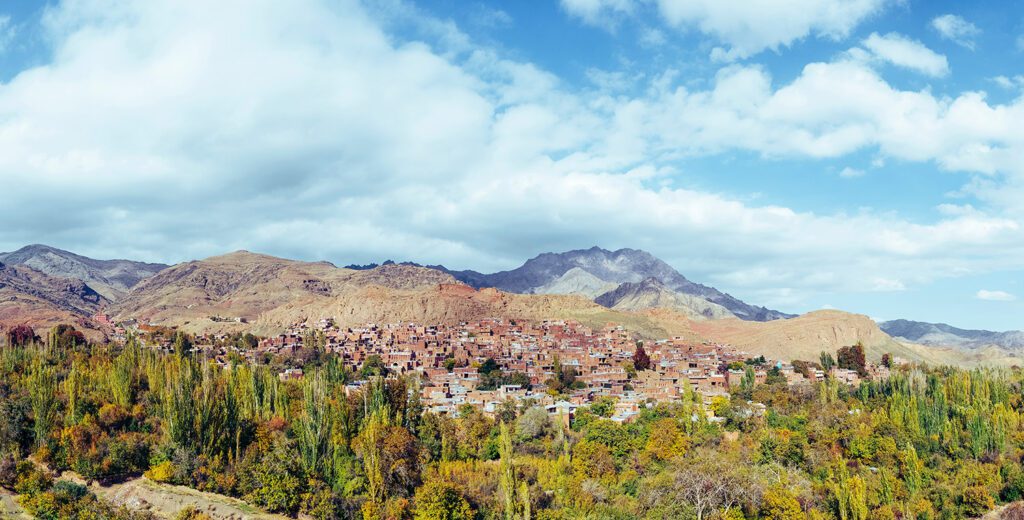
Women and girls wear traditional dress and skirts, along with floral scarves and a traditional shoe called Giveh. People speak their own dialect that is a trace of the old Persian language, Pahlavi. Also traditions such as Norouz and Muharram mournings are taken seriously here.
Qamsar and Barzok
Qamsar is the hub for Rose Water making or as it’s called in Persian, Golab Giri. Late April and early May is the harvest time for aromatic Damask roses, tourists roam to the region to enjoy the fresh air and aroma of the roses and residents are busy with distilling and making of the magical potion. You can also go to Barzok, to enjoy most things Qamsar has to offer, without dealing with the crowd. Enjoy a walk in small avenues, sit by little streams and have some aromatic tea at the distilling facilities.
Niasar
Another pleasant getaway from Kashan is the garden city of Niasar. With cool air and green orchards, it is the main hub for Kashani people to escape the heat in the summer.
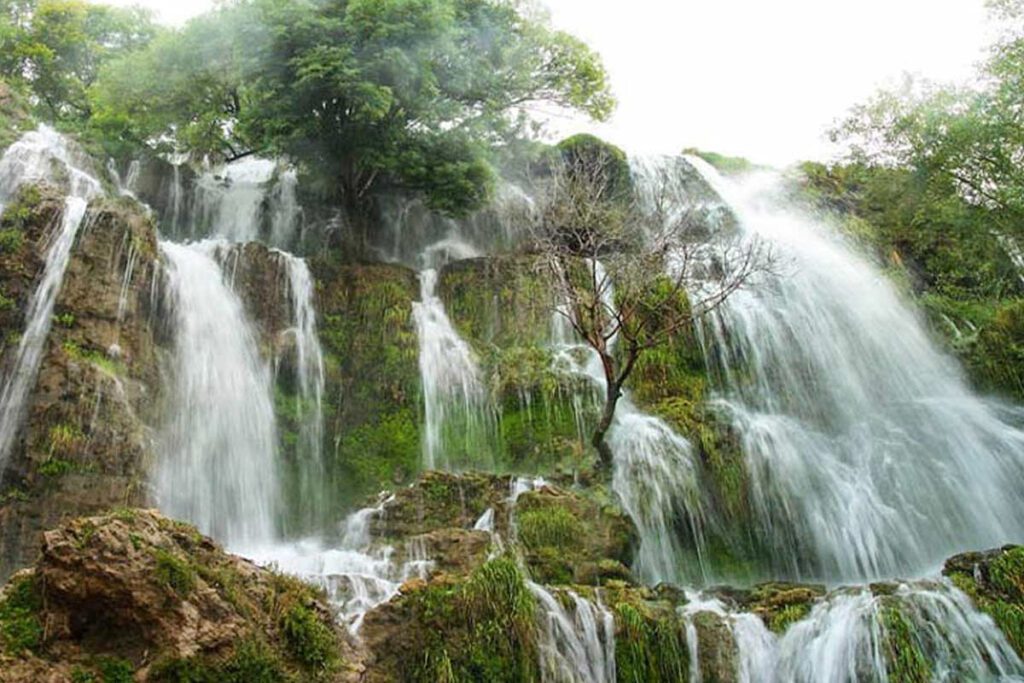
A walk uphill takes you to a Chartaqi, an ancient Zoroastrian fireplace that was built for offerings and to guide travelers in the desert. Besides an old Hammam (bathhouse) and water mill, Niasar has a historical sacred site, the Raeis cave, which is believed to be built for ancient rituals such as Mithraism.
Nushabad
This little town is home to one of the largest underground settlements in Iran, dating back to the pre Islamic era. The underground city of Ouyi consists of several passages, rooms, storage areas and water wells, all dug into the ground to protect the villagers from enemy attacks.
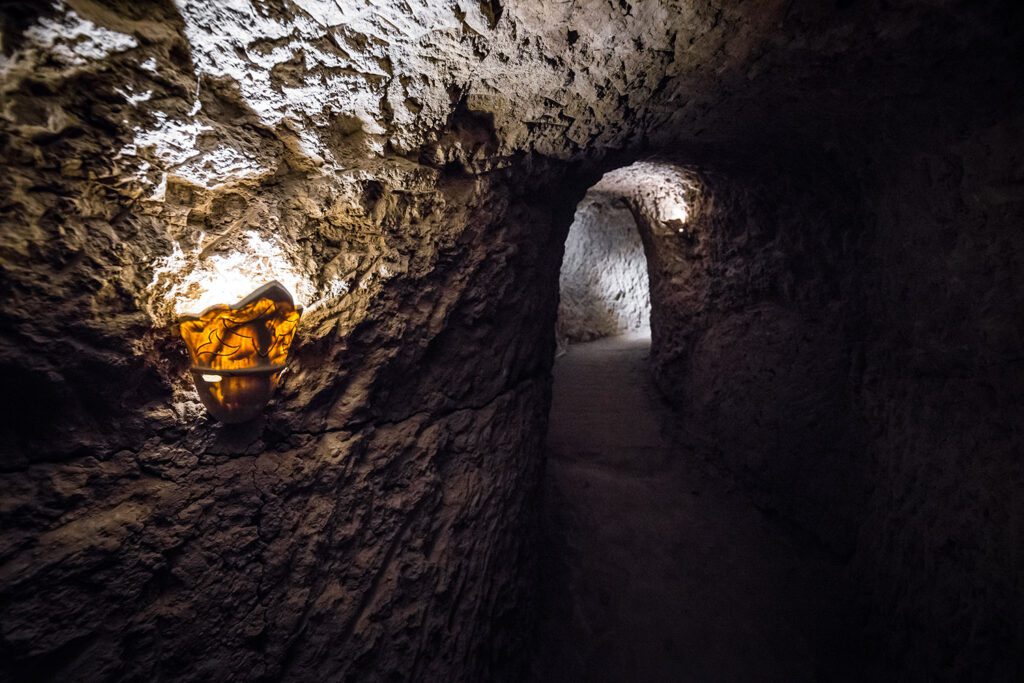
Ouyi had openings in people’s homes or into outdoor ovens, had hidden ventilation pipes and also had some traps in certain entry points to stop the intruders.
For Desert Experience:
Aran and Bidgol
Aran and Bidgol is a small city with harsh summers and winters, but from here you can go to the salt lake or to the Maranjab Caravanserai in Rig-e Band. You can check if night stay is available at the Caravanserai at the time of your visit, so it gives you that chance to enjoy the million stars night sky of the desert.
Abu Zeyd Abad
Abu Zeyd Adad is the starting point of desert adventures, popular among Iranians. Famous sand dunes and the Chal Aroos salt lake, Korshahi castle, and Yakh-Ab mountains are the main attractions near Abu Zeyd Abad.
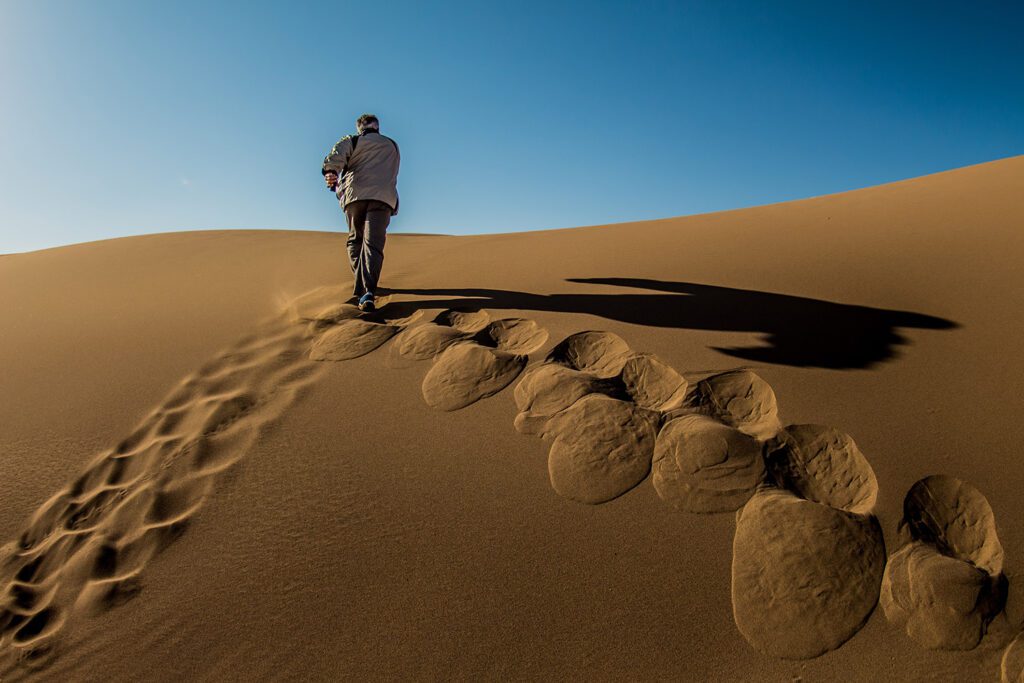
Public Transport
Kashan is not a large city, and most places are easily accessible by taxi and online taxi (Snapp). There are city buses (Khatte Vahed) as well, but it is time consuming and the service is limited. Therefore, low cost taxis and online taxis are more favorable options.
Safety Consideration
Kashan in general is a safe city, there is no major safety issue to stress the travelers. However, Kashan is a city with a strong religious tradition, and it’s important for travelers to be mindful of Islamic customs and laws to ensure a respectful and enjoyable experience. This is especially important during months of Muharram and Safar, as well as the month of fasting or Ramadan.
Souvenir
Rose Water (Golab)
Don’t leave Kashan without purchasing some Golab, or even better, the condensed soft drink, Sharbat. It comes in different flavors and mixed with ice water to create a refreshing beverage for hot and sunny days.
Baklava
Baklava is a very widespread layered dessert that can be found as far as Algeria and Greece, but many cities of Iran have their own variations of Baklava. In Kashan Baklava is more nutty than other versions, it comes in flavors of almond, pistachio, walnut or coconut and usually is very aromatic for the use of rose water, cardamom and saffron.
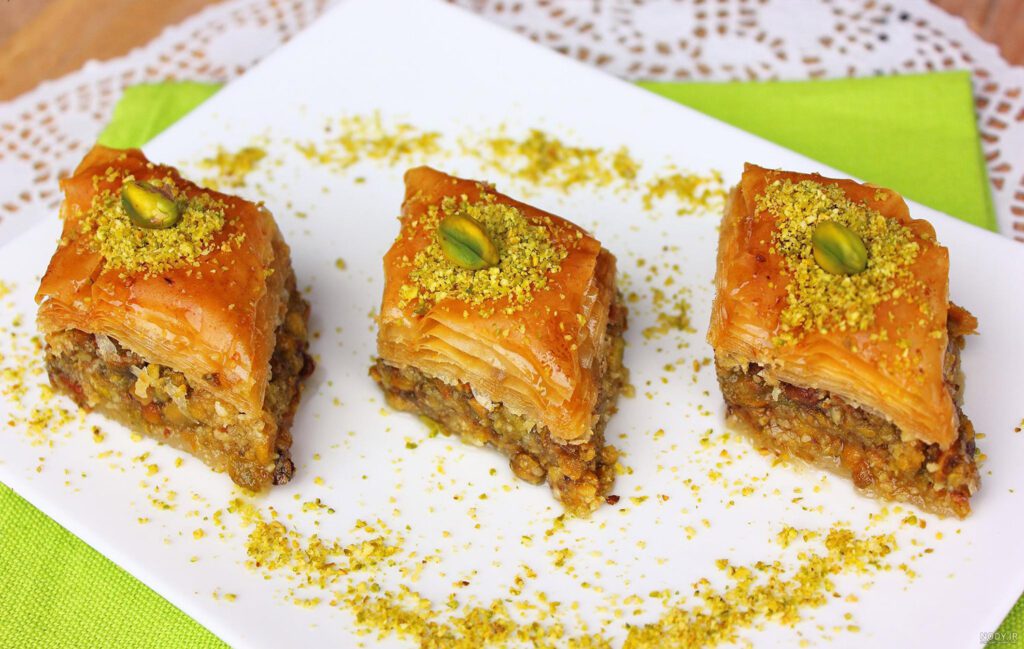
Damask Rose buds
Yes, the beautiful rose buds are a souvenir of Kashan to be used as decorations in the kitchen or as an ingredient in aromatic teas. One very delightful herbal tea consists of damask rose buds and Saffron.
Kashan Rugs
Hand woven Kashan carpets are among the highest quality Persian carpets one can find. Elaborate designs, double knots, and eye-catching colors are the main characteristics of these carpets. Kashan has a long history of dyeing and even today, you can find dyeing workshops in the city that are using the traditional ways to dye threads to be used in carpet weaving and in Sha’r Baafi.
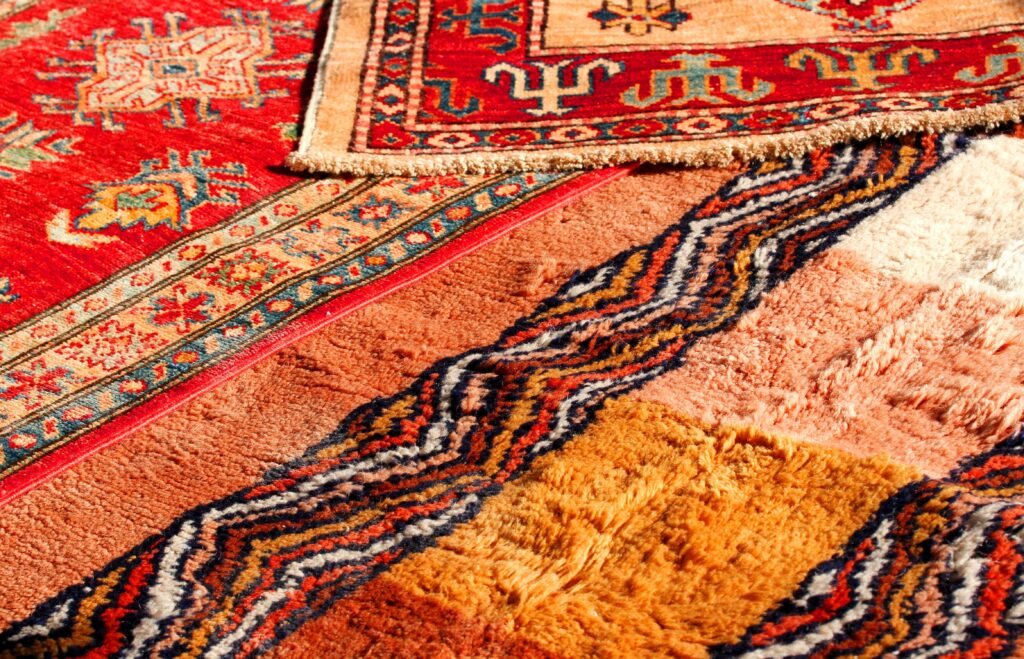
Sha’r Baafi
Sha’r Baafi is one of the oldest surviving ways of textile production in the central Iran region. In the past, Kashan was famous for its silk fabrics and was mentioned in travelogs from merchants traveling on the Silk Road. Today, very few workshops of Sha’r Baafi are still working in the traditional way and can take you back into the history and bring you out with pleasant souvenirs.
Weather
Kashan has very hot summers and cold winters, due to its desert climate. In fact there is a term to describe the harsh cold weather in the winter: Ostokhan Sooz, meaning bone burner. Therefore, the best times to travel to Kashan are March and April in Spring and October and November in Fall.
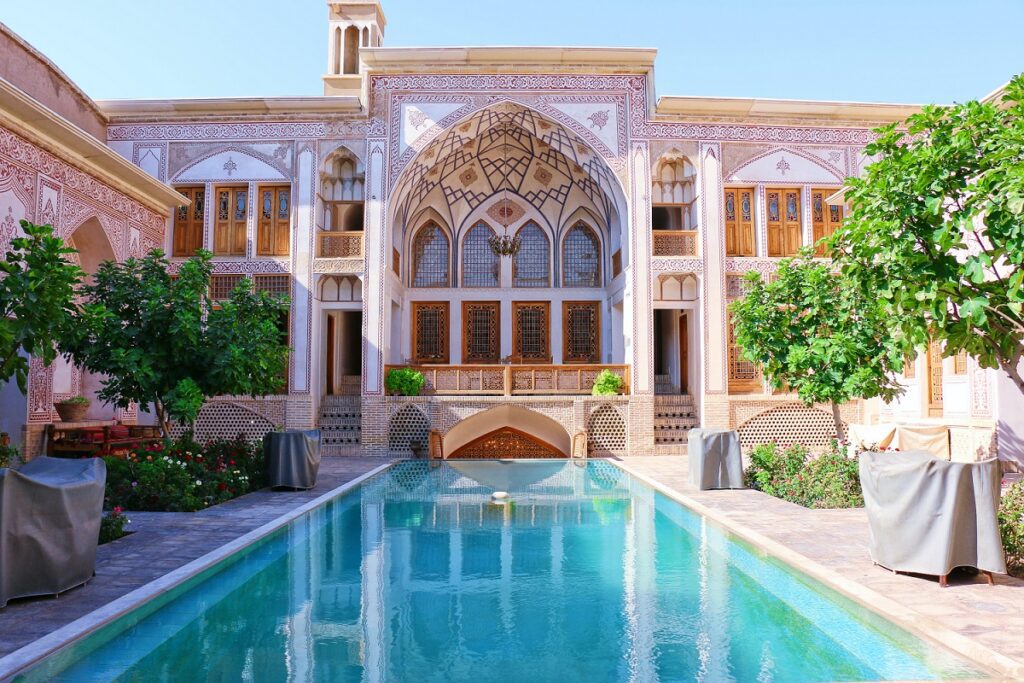
If you happen to be traveling during the hot months of summer, check the neighboring Yaylaqs like Niasar and Barzok to cool down. Also, be prepared if you are planning to have a desert trip in winter, as temperature fluctuation between day and night is brutal.
Accommodation
Boutique Hotels
Kashan is your best chance to stay in a magnificent traditional house in Iran. They are maily houses of wealthy merchants in the past and by staying in them you can feel the luxury of the rich in ancient Iran. Some of the noteworthy boutique hotels in Kashan are:
Saray-e Ameri-ha Boutique Hotel
Manouchehri House Boutique Hotel
Sabbaghian Saray Boutique Hotel
Amirza Traditional Hotel
Morshedi House Hotel
Adib House Boutique Hotel

Eco Tourism (Boom Gardi)
For more budget friendly options there are many traditional houses or ecotourism houses with less amenities that in them, you can experience how the general public used to live in Iran. These kinds of accommodations are called Boom Gardi and can be found in every city and village. Some examples of Boom Gardi homes in Kashan are:
Khooneh Noghli
Puppet Museum (Moozeh Aroosak)
Saray-e Sayeh
Amirza traditional house
Rohani House in Barzok
Kooshk-e Agha Mohammad in Qamsar
For a distinct desert stay:
It is possible to stay in centuries old Caravanserais as well as newly constructed eco-camps that are getting popular in Iran. Here are two of the options near Kashan. Consider that these places may not be an option for everyone. Their amenities could be short of what you are expecting, due to the distance they have from infrastructures.
Matin Abad Eco Camp
Maranjab Caravanserai
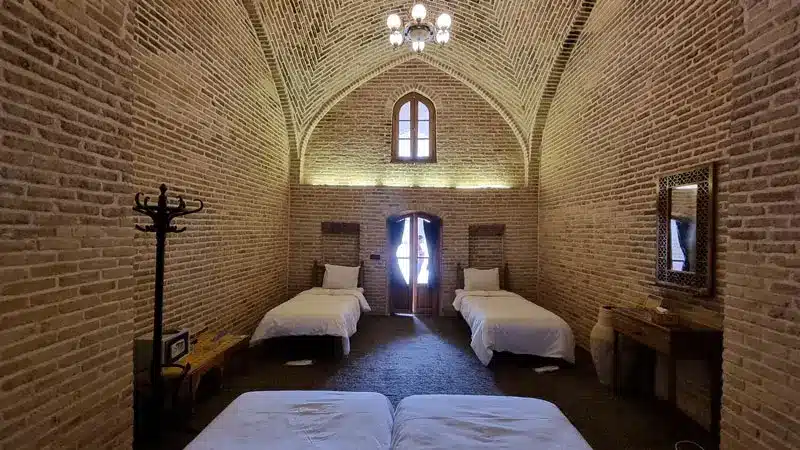
Shopping Centers
Souvenirs
Traditional Bazaar of Kashan is your best bet to find carpets, Sha’r Bafi, ceramics and so on.
Golab and other distiltries
Mohtasham street and Alavi street have loads of stores to purchase the aromatic souvenirs.
Sweets
Ask for a branch of Shekar-riz or Nabat-riz confectioneries for traditional sweets of Kashan.
Others
For more modern and regular goods and merchandise:
Safavi Shopping Center
Sabz Shopping Center
Sepid Shopping Center
Shafagh Shopping Center
Restaurants
Kashan’s Traditional Food:
Manouchehri House Restaurant
Khooneh Noghli Restaurant
Talare Ayeneh Restaurant at Sara-ye Ameriha
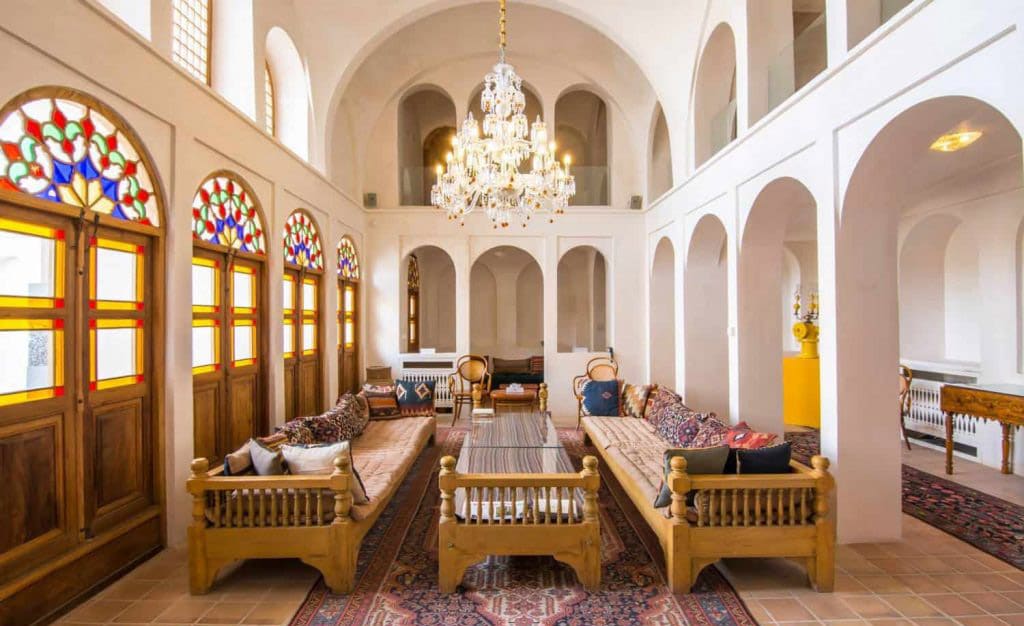
Kabab and Other Regular Persian Foods:
Baghe Behesht Restaurant near Fin Garden
Khatoon Restaurant in 22 Bahman street
Abbasi Traditional Restaurant
Fast Food:
Khaneh Burger on 22 Bahman Street
Jazireh Restaurant on Madani Street near Baba Afzal
